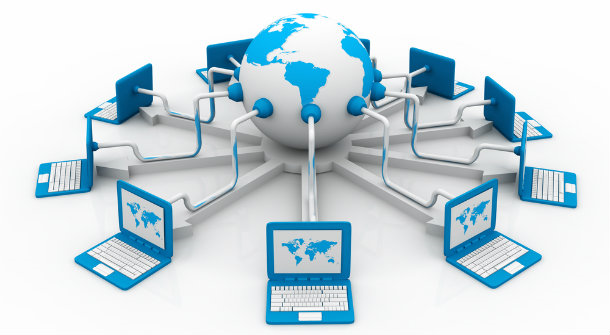Fourth & Fifth Generation Networks
Fourth & Fifth Generation Networks
4G is a concept of inter-operability between different sorts of networks, which is all about high speed data transfer such as 0-100MBPS of either the server or the data receiver set is moving at a speed of 60 Kmph. If the server
and the receiver are stationary, the data transfer would be a minimum of 1GBPS. 4G is the next generation wireless networks that will replace 3G networks sometimes in future. In other context, 4G is simply an initiative by academic, R & D labs to move beyond the limitations and problems of 3G which is having trouble getting deployed and meeting its promised performance and throughput.
These days in 3G we can access the internet through our mobile phone with the help of various technologies, like Wi-Fi, Wi-Max, GPRS, EDGE, WAP and Wi-Bro. But the problem is that if you are accessing the internet through your mobile phone within the help of any of these technologies and you move to place where inter-operability between different networks obtains, you are stuck. If you are using 4G, you can access the net through any of the aforesaid technologies even while moving from one place to another. Expected issues considered to be resolved in this 4G mobile technology which are as under:-
» It is considered to embed IP feature in the set for more security purpose as high data rates are send and receive through the phone using 4G mobile technology.
» 4G mobile technology is going to be able to download at a rate of 100Mbps like mobile access and less mobility of 1GBps for local access of wireless
» Instead of hybrid technology used in 3G with the combination of CDMA and IS-95 a new technology OFDMA is introduced 4G. In OFDMA, the concept is again of division multiple accesses but this is neither time like TDMA nor code divided CDMA rather frequency domain equalization process symbolizes as OFDMA.
» CDMA sends data through one channel but with the division of time in three slots. While CDMA also sends data through one channel identifying the receiver with the help of code. Whereas in 4G mobile technology OFDMA is going to introduce in which data packets sends by dividing the channel into a narrow band for the greater efficiency comprises a prominent feature of 4G mobile technology.
» IEEE 802.16m is processing for the IEE802.16e comprising the 4G brand will define it as WMBA (Wireless Mobile Broadband Access). This is a plain indicator for the internet availability. The implementation is in progress to avoid the call interference in case of data download from a website. It will propose 128 Mbps downlink data rate and 56Mbps uplink data rate which is an extra ordinary step in 4G mobile technology. The service will limit as the availability of hotspot is condition for the internet connectivity.
» Parallel with WiMAX, LTE is intended to incorporate in 4G mobiles. It is also a wireless technology for the broadband access. The difference between WiMAX and LTE is that LTE goes for the IP Address. It follows the same TCP / IP concept inherited from networking technology. Restricted for the IP addresses it will provide great security as well as high data transferability, avoid latency, having the ability to adjust the bandwidth. LTE is compatible with CDMA so able to back n forth the data in between both networks.
» 3GPP Organization is going to introduce two major wireless standards; LTE and IEEE802.16m. Former is granted permission for the further process while second is under consideration and that will become a part of 4G mobile technology.
» IPv6 is approved by Version as a 4G standard on June 2009.
Fifth Generation (5G)
5G (5th generation mobile networks or 5th generation wireless systems) is a name used in some research papers and projects to denote the next major phase of mobile telecommunications standards beyond the upcoming 4G standards, which are expected to be finalized between approximately 2011 and 2013. Currently 5G is not a term officially used for any particular specification or in any official document yet made public by telecommunication companies or standardization bodies such as 3GPP, WiMAX Forum or ITU-R. New 3GPP standard releases beyond 4G and LTE Advanced are in progress, but not considered as new mobile generations.
5G network is assumed as the perfection level of wireless communication in mobile technology. Cable network is now become the memory of past. Mobiles are not only a communication tool but also serve many other purposes. All the previous wireless technologies are entertaining the ease of telephone and data sharing but 5G is bringing a new touch and making the life real mobile life. The new 5G network is expected to improve the services and
applications offered by it.
This paper concludes by looking back at existing wireless technologies and summarizing the next generation wireless communication media in the following table. These technologies, indeed, have a long way to go and exciting and amazing products are bound to emerge in the years to come.
